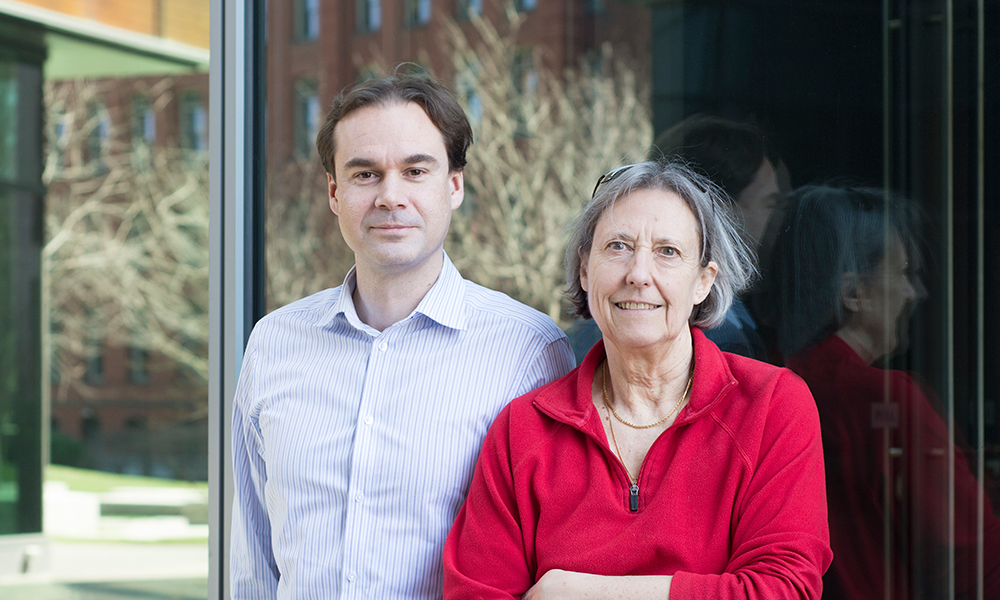The genomes of most eukaryotic organisms, including humans, contain large amounts of repetitive DNA organized in the form of heterochromatin. As a result, this specialized chromatin state plays critical roles in regulating the structure and function of the nucleus. One major repressive epigenetic modification associated with repetitive heterochromatin is di- or trimethylation of histone H3 lysine-9 residues (H3K9me2/3), which is catalyzed by the conserved SUV39 lysine methyltransferases in organisms as diverse as S. pombe, fruit flies, and mammals.
How the presence of DNA repeats can direct heterochromatin assembly represents a major unsolved problem in chromosome biology. Currently proposed models either 1) involve sequence-specific proteins that bind to individual DNA repeats or 2) require transcription of repetitive DNA to produce nascent RNAs that can be used for recruiting heterochromatin factors. The present work of Gladyshev and Kleckner, published in Nature Genetics (PDF), proposes a new general model, by which direct interactions between homologous double-stranded segments of chromosomal DNA (such as tandem repeat arrays) may provide a specific signal for heterochromatin assembly. This model does not require any specific sequence elements or transcription; rather, it takes advantage of the presence of DNA homology per se.
The model is based on the analysis of Repeat-Induced Point mutation (RIP), a process that occurs in many filamentous fungi, including Neurospora crassa. During RIP, haploid nuclei display a remarkable capacity to detect DNA homology that may be represented by as few as two sequence copies of several hundred base-pairs (or longer). Homologous DNAs are detected largely irrespectively of their specific base-pair sequence, origin, transcriptional and coding capacity, or relative/absolute positions in the genome. Once detected, both copies undergo strong cytosine-to-thymine (C-to-T) mutation over the extent of shared homology. Previous work by Gladyshev and Kleckner, published in Nature Communications, showed that RIP does not require RecA homologs, the key mediators of homology recognition during recombinational DNA repair. This preceding work also provided genetic evidence that repeat recognition for RIP involves direct interactions between base-pair triplets presented along the interface of co-aligned homologous DNA duplexes.
The newly published study shows that RIP can be carried out by the same proteins that normally participate in the formation of heterochromatin on repetitive DNA in vegetative cells of N. crassa, including DIM-5, the only SUV39 homolog in this organism . By extension, the process of homology recognition used for RIP could analogously underlie repeat recognition for heterochromatin formation. In support of their hypothesis, Gladyshev and Kleckner used a sensitive assay to show that a very short RIP-sensitive repeat construct does, indeed, attract heterochromatin marks in vegetative cells of N. crassa.
Mammals, including humans, feature a number of other epigenetic phenomena that involve DNA homology, such as genomic imprinting, random monoallelic gene expression, and random X-chromosome inactivation. It will be interesting to investigate if some or all of these cases also share the same basic mechanism of DNA homology recognition with RIP.
(PDF)



